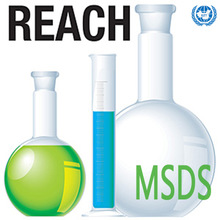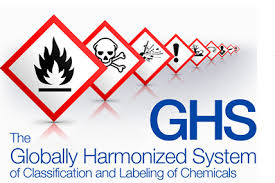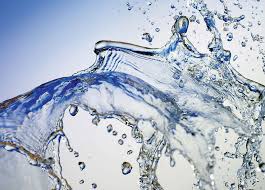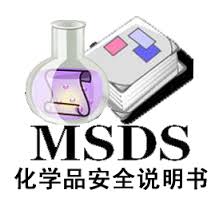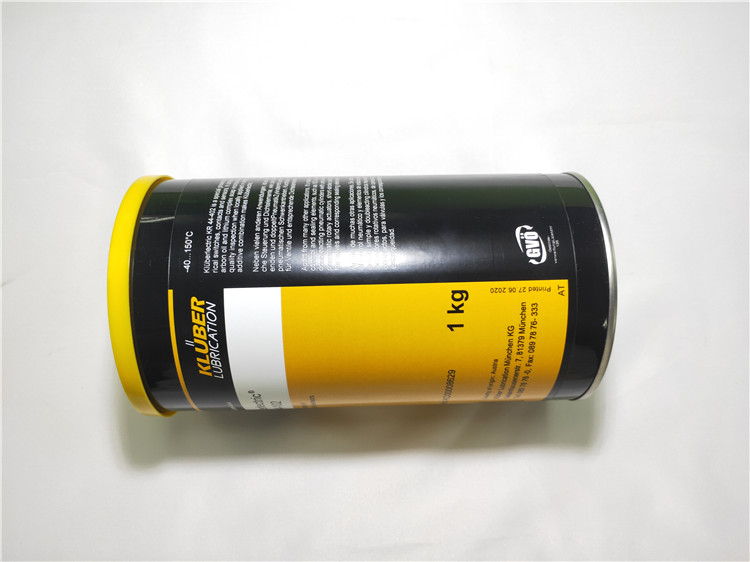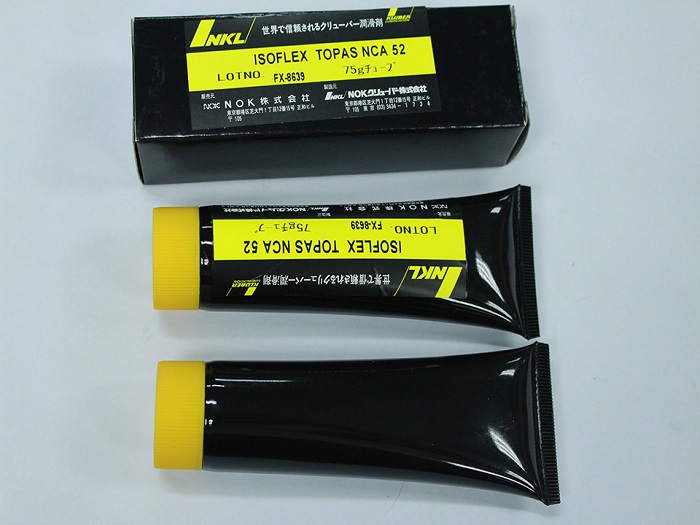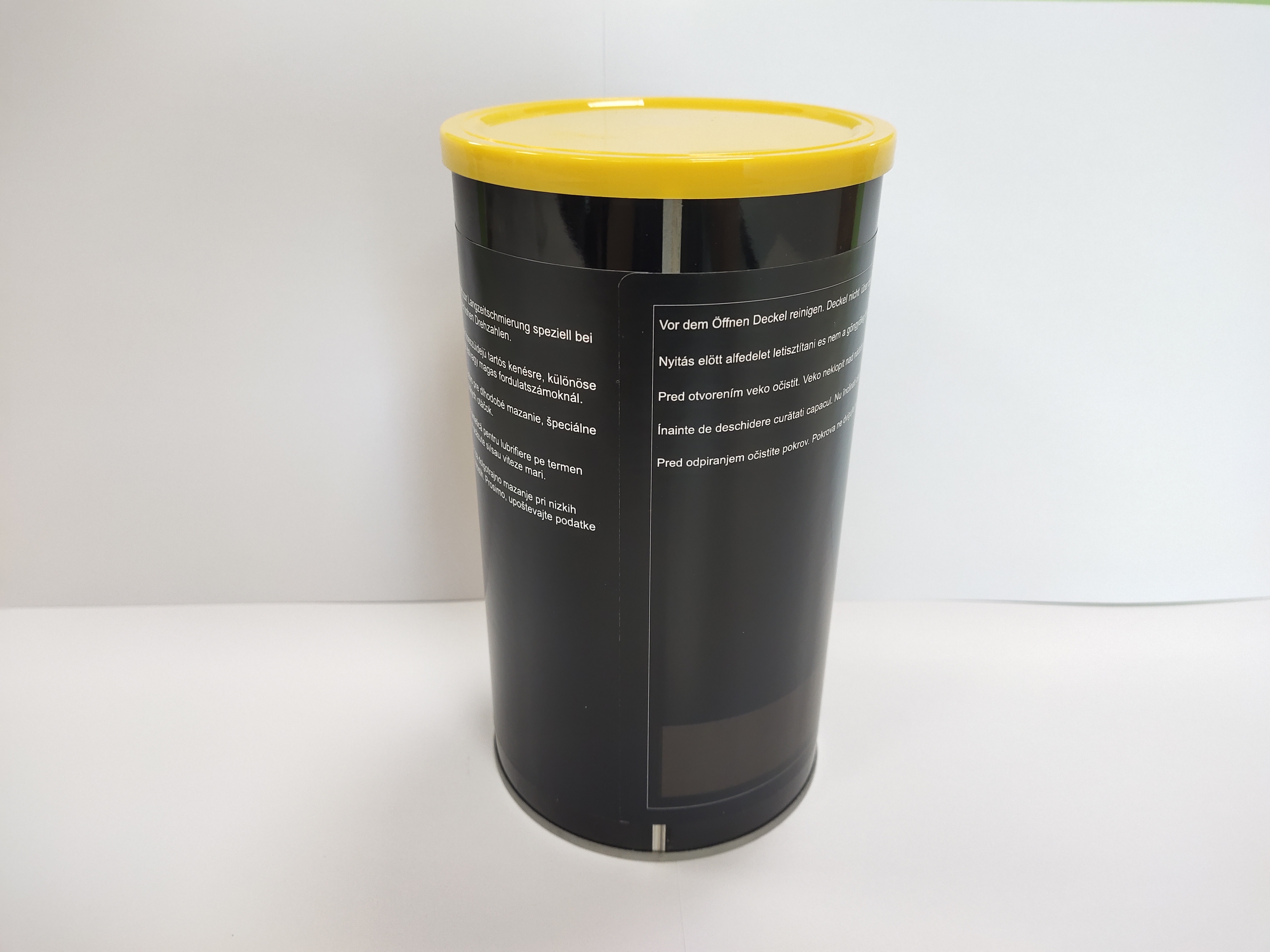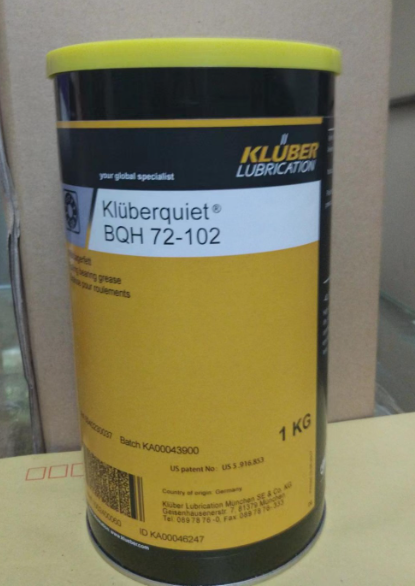GHS SDS And Label


Globally Harmonized System of Classification and Labelling of Chemicals IntroductionGlobally Harmonized System of Classification and Labelling of Chemicals (short for GHS), published by United Nations, is a normative document for guiding countries to control chemical hazards and to protect human health and environment. United Nations World Summit on Sustainable Development encouraged countries to implement the GHS by 2008. APEC members promised to implement the GHS since 2006. United Nations Economic and Social Council Resolution 2011/25 demanded that GHS Sub-Committee Secretariat invited countries which hadn't implemented the GHS to implement the GHS through the national legislative process as soon as possible.1.The purpose of establishing GHSThere are about millions of chemicals in the world, around 70,000 chemicals commonly used. Approximately thousands of new chemicals come out each year.Many chemicals have adverse effects on human health and environment, such as corrosive, teratogenicity, carcinogenicity chemicals. As part of the chemical workers lack operation awareness of safe use, in the process of production, storage, handling, transport, waste disposal, it will inevitably damage their health or have negative impacts on the environment.Over the years, the relevant United Nations agencies, the United States, Japan, Europe and other industrialized countries have made specific provisions on chemical hazard classification, packaging and labelling by legislation. Due to differences in national definitions of hazardous chemicals, it will cause that one chemical is considered as flammable and hazardous chemical, and in other country it is considered a non-flammable and non-hazardous chemical.In international trade, it increases the cost of trade and consumes time to comply with different national legislation of hazard classification and labelling. In order to improve the management of hazardous chemicals, protect human health and environment, provide developing countries which have not establish chemical classification system with a framework for the management of hazardous chemicals, it is necessary to uniform chemical classification and labelling system, resolve national differences in classification standard, methodology and terminology, establish of GHS classification and labelling system.2.GHS established timetable1992: The United Nations Environment and Development Conference adopted the "Agenda 21", suggesting: "If possible, GHS classification and labeling system, including the chemical safety data sheet and intelligible label should be provided by 2000." United Nations International Programme on Chemical Safety (IPCS) is the core to carry out the international cooperation activities. IPCS under Harmonization of Chemical Classification System Coordinating Group (CG/HCCS) promotes and supervises the work of the GHS Classification and Labelling.Sep. 4th 2002: Global Summit on Sustainable Development held in Johannesburg, United Nations adopted the "Action Plan", and article 22 (c) states: nations are encouraged to implement the new GHS classification and labeling system as soon as possible in order to make the system fully operated by 2008.March 1995: World Health Organization, the International Labour Organization and five other international organizations established Inter-Organization Programme for the Sound Management of Chemicals (IOMC) to coordinate the implementation of UNCED recommendations chemical safety activities and supervise the work of the CG/HCCS. The International Labour Organization, the Organization for Economic Cooperation and Development (OECD) and Subcommittee on the Transport of Dangerous Goods of United Nations Economic and Social Council coordinate experts to draft Harmonized System of Classification and Labelling Recommendations.July 2003: United Nations Economic and Social Council formally adopted the GHS instrument and translate them into UN working languages, worldwide distribution.On the second session of the Committee of Experts, the errata of the first version GHS was approved in December 2004. GHS first revised edition was published in 2005.On the third session of the Committee of Experts, the errata of GHS first revised edition was approved in December 2006. GHS second revised edition was published in 2007.On the fourth session of the Committee of Experts, the errata of GHS second revised edition was approved in December 2008. GHS third revised edition was published in 2009.On the fifth session of the Committee of Experts, the errata of GHS third revised edition was approved in December 2010. GHS fourth revised edition was published in 2011.On the sixth session of the Committee of Experts, the errata of GHS fourth revised edition was approved in December 2012. GHS fifth revised edition was published in 2013.On the seventh session of the Committee of Experts, the errata of GHS fourth revised edition was approved in December 2014. GHS sixth revised edition was published in 2015.3.Description of national implementationChina: Since 2005, experts have occasionally attended international meetings held by United Nations to make and review GHS standards. GB20576 ~ 20602-2006 were made and implemented since Jan. 1st 2008 in the production and since Dec. 31st 2008 in the circulation. GB/T 16483-2008 'Safety Data Sheet for chemical products-content and order of sections' was enacted in June 2008 to regulate China SDS compilation. In September 2013, GB/T 17519 'Guidance on the compilation of safety data sheet for chemical products' were enacted and effective from Jan. 31 of 2014. For safety label, the China standard is GB 15258-2009 'General Rule for Preparation of Precautionary Label for Chemicals', and Label for China should be Chinese Safety Label. GB 13690-2009 'general rule for classification and hazard communication of chemicals' is the general rule, GB30000.2~GB30000.29-2013 replacing GB 20576~20602-2006 were also made in 2013 and implemented since Nov. 1st 2014.Japan: Ministry of Health, Labour, and Welfare (MHLW), Ministry of Economy, Trade and Industry (METI) and Ministry of the Environment set up an inter-departmental committee of experts and launched the GHS classification scheme. JIS Z 7250-2005 was adopted and made specific provisions on MSDS preparation in 2005. JIS Z 7251-2006 was adopted and made specific provisions on Label preparation in 2006. JIS Z 7253:2012 were issued to replace JIS Z 7250 and JIS Z 7251. JIS Z 7252: 2014 is GHS classification standard of Japan.EU: Recommendation of "The approximation of laws, regulations and administrative provisions relating to the classification, packaging and labelling of dangerous substances (67/548/EEC) and REACH (EC-1907/2006)" was considered and approved in June 27th 2007 and implemented at the end of 2008. Legislation proposes that chemical substances implement GHS classification since Dec. 1st 2010 and chemical mixtures implement GHS classification since 1st June 2015.America: Occupational Safety and Health Administration (OSHA) presented the third edition of UN GHS classification criteria and formed legal text, namely HazCom 2012. GHS-HazCom2012 entered into force in March 25th 2012 and required companies to provide MSDS and labels complied with GHS regulations no later than June 1st 2015.4.GHS classification and hazard statement elementsGHS including:(1)According to physical hazard, health hazard, environmental hazard, to make classification of chemical substances and mixtures.(2)Hazard statement elements, including MSDS and labels.There are 29 GHS hazard classification, including 17 physical hazard classification, 10 health hazard classification and 2 environmental hazard classification. Details as follows:physical hazardhealth hazardenvironmental hazardExplosivesAcute toxicityHazardous to the aquatic environmentFlammable gasesSkin corrosion/irritationHazardous to the ozone layerFlammable aerosolsSerious eye damage/eye irritationOxidizing gasesRespiratory sensitization/ Skin sensitizationGases under pressureGerm cell mutagenicityFlammable liquidsCarcinogenicityFlammable solidsReproductive toxicitySelf-reactive substances and mixturesSpecific target organ toxicity - single exposurePyrophoric liquidsSpecific target organ toxicity - repeated exposurePyrophoric solidsAspiration hazardSelf-heating substances and mixturesSubstances and mixtures which, in contact with water, emit flammableOxidizing liquidsOxidizing solidsOrganic peroxidesCorrosive to metalsHazard statement elements including:(1)Pictogram (Symbol)GHS label elements use 9 pictograms. Each pictogram applies to one or more hazard classification. As follows:(2)Signal wordSignal word is used to indicate the relative severity of the danger and alert witnesses to potential danger in label. There are 2 signal words in GHS label elements, respectively "Danger" and "Warning." "Danger" is used for more severe hazard classification, while "Warning" is used for lesser hazard classification.(3)Hazard statementHazard statement refers to the specific term assigned to hazard classification and described the risk of a dangerous product. There are totally 72 hazard statements, and each one has been assigned a specific code in order to use and recognize.(4)Precautionary StatementPrecautionary Statement refers to the specific term used to minimize or prevent from contacting hazardous chemicals, take first-aid measures against exposure people. GHS label elements use 4 types precautionary statement, namely: prevention, response, storage, disposal.(5)Label contentAccording GHS standard, GHS labels on chemical container should include the following information: pictogram (symbol), signal word, hazard statement, precautionary statement, other information required by the authorities and identification information of provider. Small package can use simply label.(6)Safety Data Sheet (MSDS)MSDS elements including:①Product and company identification②Hazards identification③Composition/information on ingredients④First aid measures⑤Firefighting measures⑥Accidental release measures⑦Handling and storage⑧Exposure controls/personal protection⑨Physical and chemical properties⑩Stability and Reactivity⑪ Toxicological information⑫ Ecological information⑬ Disposal considerations⑭ Transport Information⑮ Regulatory information⑯ Other information5.Other information(1)GHS classification applies to all chemical substances, the diluted solution and chemical mixtures. Drugs, food additives, cosmetics, pesticide residues are due to conscious consumption and not suitable for GHS classification. However, if these types of chemicals have impact on workers or are in transit, they will still be bound by the GHS classification.(2)GHS uses the building block principle. It is not necessary to adopt all GHS classification in all area. For transportation, reference to the relevant requirements of dangerous goods transportation, GHS will focus on pictograms of acute toxicity, physical hazard and environmental hazard in the dangerous goods containers, including signal word and hazard statements. For workplace, all GHS elements, including GHS label and MSDS, should be used. For consumer, GHS will focus on the label.
Other supplier products
|
|
GHS In Taiwan |
GHS in TaiwanTaiwan is among the first areas in the world that have adopted GHS.In December 2007, Taiwan Executive Yuan approved the effective date... |
|
|
Chemical Regulation |
Chemical Regulation ServiceAs for global village today,Website:, international business becomes the key. International business of chemicals faces ... |
|
|
Materials For Non-New Portable |
Materials Needed for Registration of non-New Products Related to Drinking Water 1. Production capacity audit opinion issued by China provincial aut... |
|
|
Regulation Background |
New Chemical Registration --- BackgroundWith the effectiveness of Chemical Registration System in China from October 2003, and its revised version ... |
|
|
Information Needed For SDS Preparation |
Instructions for SDS OrderIn order to facilitate the assessment and save time, it is advised that you should read the following instructions carefu... |
All supplier products
Same products









